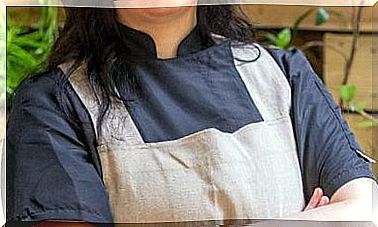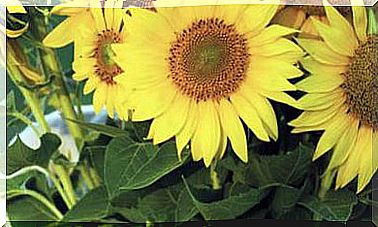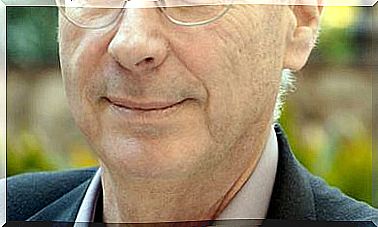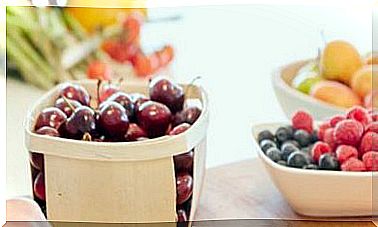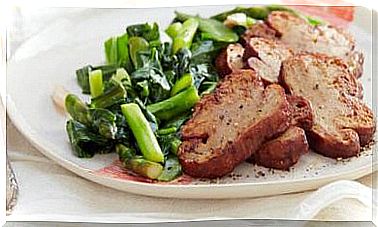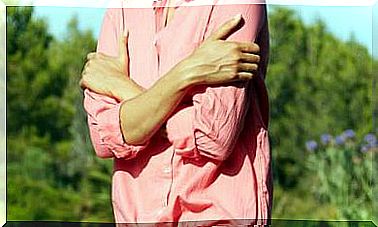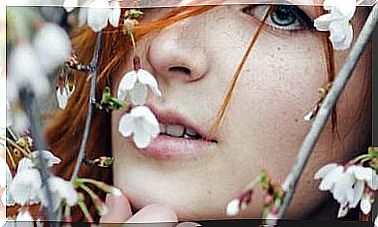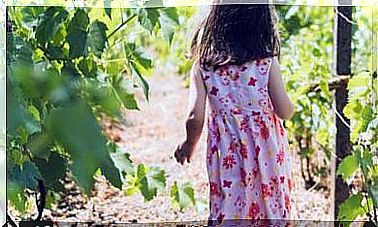Gua Sha Facial: The Ancient Technique That Rejuvenates The Skin
The gua sha stone allows facial massages that activate the circulation of the skin and produce a lifting effect. We tell you how it works and how to use it.
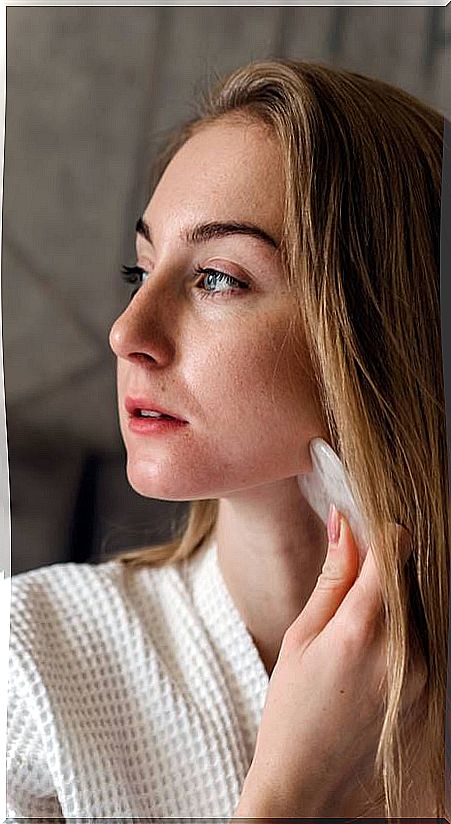
- Gua sha stone: what is it
- Benefits of gua sha for the skin
- How to use gua sha stone
- How to choose gua sha: materials and shape
- The jade roller, how is it different?
- Gua sha exercises against fine lines
Gua sha is an ancient massage technique of traditional Chinese medicine that is performed by sliding a jade stone, quartz or other materials with pressure on the skin. The objective of this scraping technique is to increase blood flow and improve circulation in the area being treated, usually the back, shoulders or neck, to relieve muscle tension, undo blockages and, acting at a deeper level, improve different health problems.
However, there is a much softer and equally ancient form of gua sha that is applied to the skin of the face and that we can learn to do at home, a self-massage technique with a stone that can be part of a pleasant and effective ritual. of beauty to improve the appearance of our skin, increase its smoothness and eliminate wrinkles. It is what is known as facial gua sha, and the interest in facial yoga, of which this technique is a part, is causing it to awaken passions.
Here we will see what gua sha is and how it is used. You will also find some exercises with gua sha to reduce fine lines.
Gua sha stone: what is it
The guasha or gua sha stone is a stone normally made of rose quartz or jade with different shapes depending on the area of the body where it is to be used. As it is a natural stone, it is usually cold, which benefits us when treating the skin of the face, and in the facial gua sha it is used by gently sliding it over the skin in an upward direction, to exert a lifting effect.
One of the people who has contributed to its dissemination in Spain is Diana Bordón, facial yoga trainer and author of Facial Yoga: Another beauty is possible . Diana had the opportunity to see how the gua sha stone was applied in China and was so fascinated that she incorporated it as a complementary technique to her Facial Yoga Plan, her own method of facial yoga exercises.
Benefits of gua sha for the skin
“When we use the guasha we help the chi flow , making the stagnant regain movement”, explains Diana Bordón. “The benefits are an improvement in circulation, better oxygenation, elimination of toxins and a lifting effect on the skin.”
The chi in Chinese medicine is the vital energy that constitutes us covers breathing, is the energy that nourishes the blood system, muscles and tendons, moisturizes the skin and lubricates joints and cavities.
“If the flow of blood or chi in an area is weak, it tends to accumulate toxins and fluids, because the lack of movement causes stagnation. On our face this usually results in swelling, spots, bags and dark circles, but also sagging, because as there is no good circulation or oxygenation, collagen and elastin cannot regenerate well, “says Diana.
But beyond its direct effects on the skin and wrinkles, facial gua sha is part of a different way of understanding beauty care. “In Asian culture they focus on daily life routines that lead to results of beauty and well-being “, explains the creator of the Facial Yoga Plan. “They give more importance to prevention and lasting beauty that is the responsibility of each one, while here the ideal of beauty is that we sit comfortably in an armchair and do everything for us.”
The use of the gua sha stone to care for the skin is one of those routines that in Asia have been transmitted from generation to generation, and it is usually combined with another utensil, the jade roller, which exerts slightly different effects.
How to use gua sha stone
Guasha can be used at any time as a beauty ritual, preferably in combination with the aforementioned jade roller, but the ideal, if you really want to take advantage of it and obtain results, is to use it in combination with facial yoga exercises, as a complement. .
Although you can find stones of different shapes, the important thing is that the stone has a lateral and elongated part (the “side”) and two rounded edges (the “corners”):
- The side: it is used for the deepest wrinkles and to make the lifting effect.
- The corners: the rounded edges allow us to treat small gaps such as the frown or the nasolabial fold.
When sliding it over the skin, it is recommended to exert moderate pressure on the skin, never strong pressure, since the facial muscles are fine and the skull is very close. And it is always done in an upward direction, from the neck up, to reposition the muscles in place and counteract sagging.
Just as the gua sha as a body scraping technique, due to the pressure exerted, tends to leave marks on the skin, in the facial gua sha this should be avoided. The pressure must be sufficient to improve the irrigation and oxygenation of the skin and to cause the lifting effect, but it must not damage the tissues.
To avoid damaging the skin with friction, it is important to hydrate before, applying the hydration directly on the skin and not on the stone. Depending on the type of skin we can use different products:
- Allergic skin: it is best to opt for a moisturizing serum.
- Normal skins: it serves a base oil such as rosehip.
- Mature skin: you can use argan oil.
“With three drops of oil spread well in the palms of the hands and placed on the face, neck and décolleté with palm pressure is enough”, recommends Diana Bordón. “If we use too much, the friction decreases and its effect also; and if we use too little, we can damage the skin, since it stays tight and the scraping slows down.”
How to choose gua sha: materials and shape
The traditional gua sha stone was made with natural jade stone, but in facial yoga the rose quartz gua sha stone is also very common . “The effect on the skin is no different. Energetically, jade is the stone of health and well-being, while rose quartz is the stone of beauty, but both promote circulation and a lifting effect on the skin”, explains Diana Bordón.
Jade is the stone that was traditionally used in the Chinese imperial court for beauty and skin care, as it was attributed healing and enhancing properties of women’s beauty. In any case, the important thing is that it is a natural stone and avoid plastic or imitation stone.
One of the advantages of jade and rose quartz is that they stay fresh. In some places it is recommended to put the gua sha in the refrigerator so that it is cold, but if natural stone is used it is not necessary.
In terms of shape, stones of different shapes are found to treat different areas of the body. The most common are those that are fish-shaped, duck-foot, and rectangular. For the facial gua sha, l o essential according to Diana Bordón is to make sure that the guasha has a small rounded area and a long area.

The jade roller, how is it different?
The jade roller is often used in combination with the gua sha. “It is the ideal, since each one works the skin in a different way “, tells us the expert in facial yoga. “While the guasha does its job of lifting effect, the roller helps to activate circulation and works by smoothing out wrinkles, like a wrinkle roller on facial skin.”
“The roller, with friction and contact with the skin, heats up and generates an electromagnetic effect that makes the blood circulate faster, with the benefits that this has of draining and eliminating toxins”, he clarifies. “After working with the roller, the guasha allows us to work the skin with a muscle-tightening effect that helps to firm the skin.”
Gua sha exercises against fine lines
These three exercises that Diana Bordón proposes are designed to relieve accumulated tension and counteract expression lines:
- Put the side of the guasha where the shoulder ends and the neck begins. With the lateral make ascending scrapes from the shoulder to the skull. Once on the skull, rest the flat area of the guasha on the side of the neck and make a slight movement to the right and to the left. Repeat this upward movement 5 times on each side.
- With the corner of the guasha in the nascent of the hair, create a straight line to the end of the skull and support the flat part of the guasha to make a slight movement of the hand to the left and right 5 times. Go back to the nascent of the hair and draw three equal lines to the right side and then to the left, doing the same action as in the first point in the center of the head.
- With the side of the guasha resting on your chin, tilt the instrument a little so that the flat part rests on your chin. Make upward movements from the chin to below the ear tracing the line of the chin, lift the instrument and return to the starting position. Repeat this upward movement 5 times on each side.
It is not recommended to use the gua sha stone on moles, in areas where there is a wound or cut, or a blow has been received, on edema or thrombosis, if you have very weak or thin skin, if you are pregnant, if you have problems clotting or if you take blood-thinning medications.
